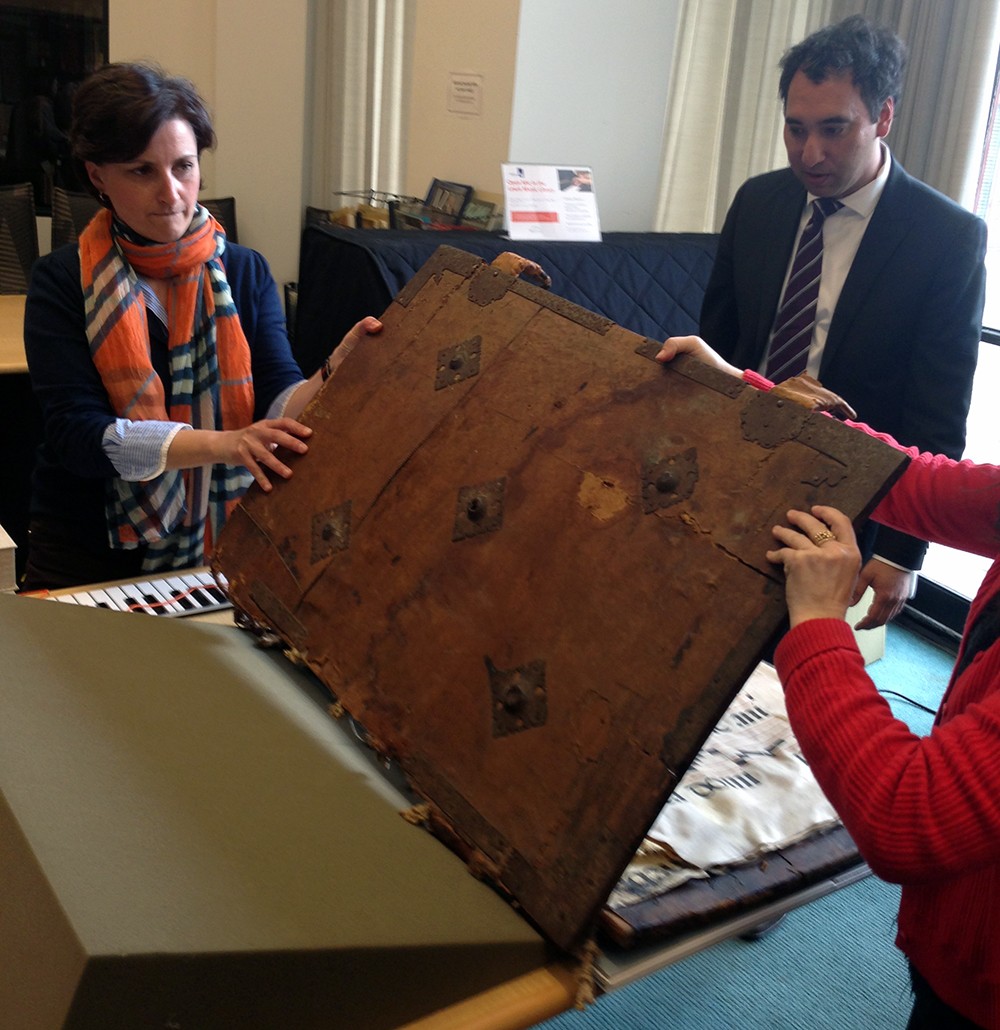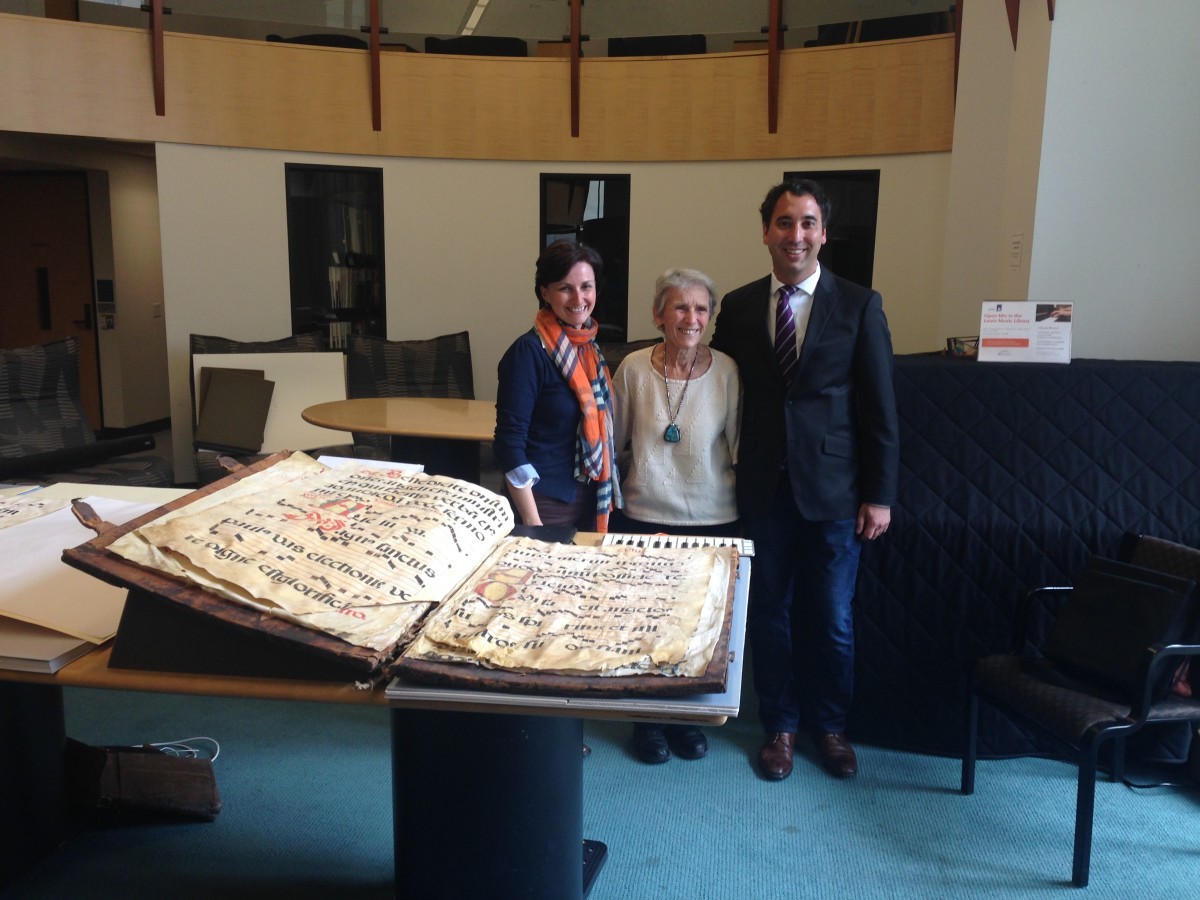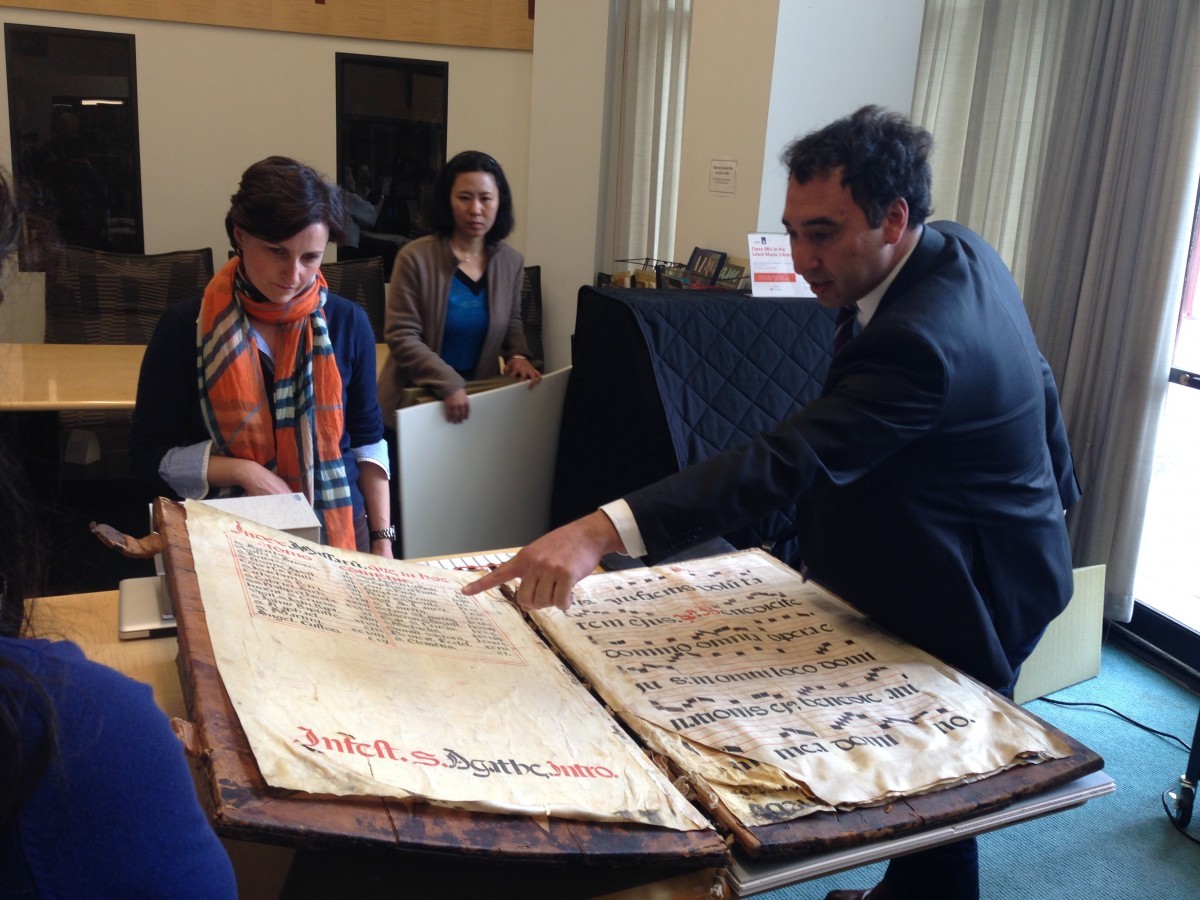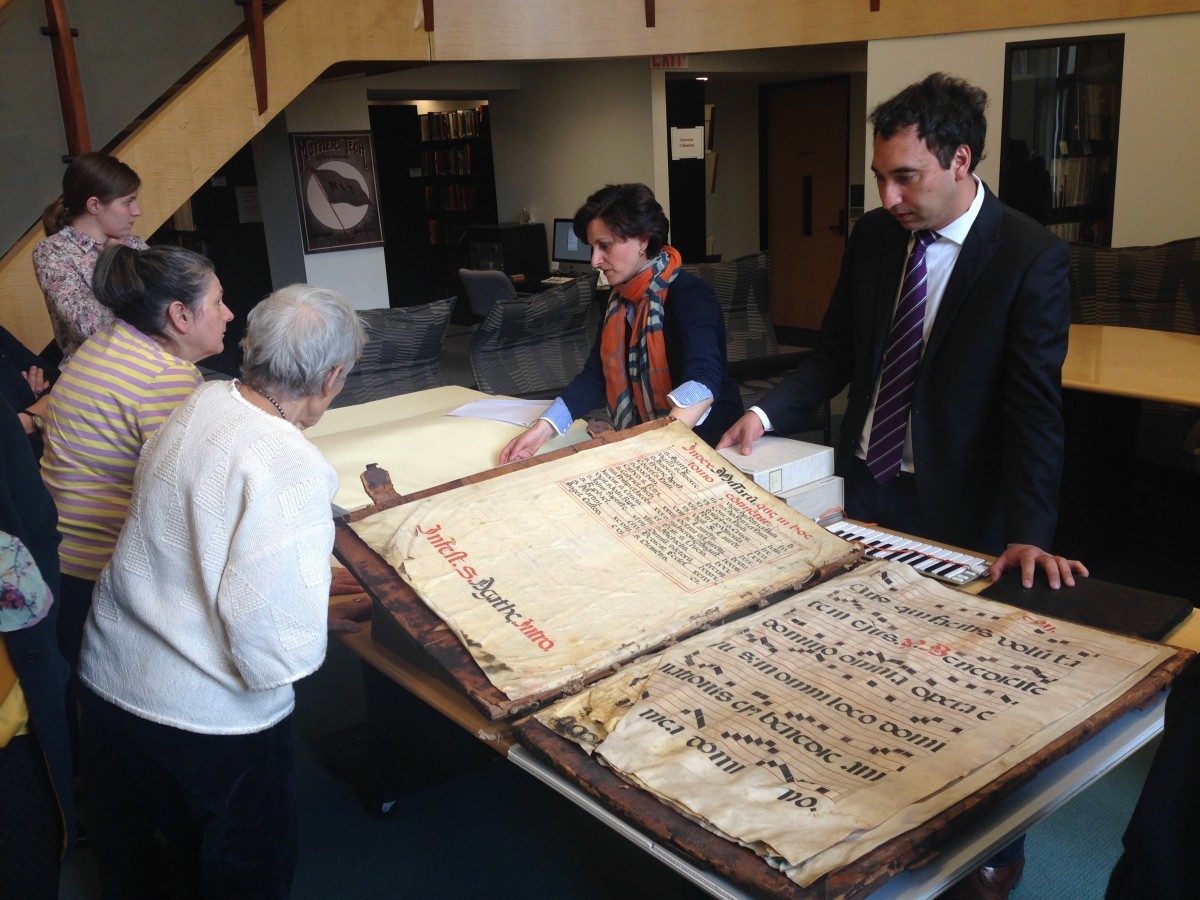Only at MIT would a musicologist writing a book on sacred medieval music also run a research lab. It was in this lab that Michael Scott Cuthbert, associate professor of music at MIT, developed “music21,” an open-source toolkit he describes as a “program for writing programs.” The software allows scholar-programmers like Cuthbert to find patterns and relationships among pieces of music from vast data sets. By his own estimation, he’s uploaded approximately two million notes into music21’s corpus of works — that’s about 100,000 pieces of music and ten billion comparisons between pieces of music, Cuthbert says. Many of these notes are from medieval scores Cuthbert has parsed from fragments of medieval manuscripts and meticulously transcribed into modern notation, but users can also add their own data sets to the program.
In graduate school during the first dot-com boom, Cuthbert, a self-described “computer geek,” began programming on the side for the National Bureau of Economic Research. He quickly realized that the programming he was doing could also be applied to his studies in music. music21 is a more advanced successor to the 80s-era application Humdrum, which similarly provides a set of software tools for musical research. A recipient of a $500,000 grant from the Digging into Data consortium and support from the Seaver Institute, Cuthbert works with MIT undergraduates to teach the computer basic musical concepts, such as what a scale is. They train it to make associations between other scraps of scores in the database, thereby painting a bigger picture of the music of a given era.
While the connection between Big Data and the Black Death might not be immediately obvious to some, Cuthbert’s research reveals the benefits of leveraging the powers of computation to help scholars reconstruct the past — as well as potentially upend some of the most basic assumptions of the field, such as where medieval music blossomed and how it has survived through time.
 For one, he posits that although France is believed to be the epicenter of this type of music, Italy may have played a more important role than scholars think. He also challenges the idea that much of the written music of the epoch has been irretrievably lost. Because many of these songs were produced in multiple texts, Cuthbert theorizes — using a computer-based statistical model, among other strategies — that the surviving repertory of Italian music from the period of the Great Papal Schism is larger than believed.
For one, he posits that although France is believed to be the epicenter of this type of music, Italy may have played a more important role than scholars think. He also challenges the idea that much of the written music of the epoch has been irretrievably lost. Because many of these songs were produced in multiple texts, Cuthbert theorizes — using a computer-based statistical model, among other strategies — that the surviving repertory of Italian music from the period of the Great Papal Schism is larger than believed.
In short, Cuthbert is a kind of musical archaeologist, scrutinizing barely preserved fragments of fourteenth century music, the notes almost entirely scraped off the thick pieces of parchment paper, and turning these traces into meaningful data which can be mined and analyzed. His research harnesses the potential of computational tools to chart relationships between seemingly unrelated historical texts and imagine the past differently, marking an exciting new path in the burgeoning field of the digital humanities.





